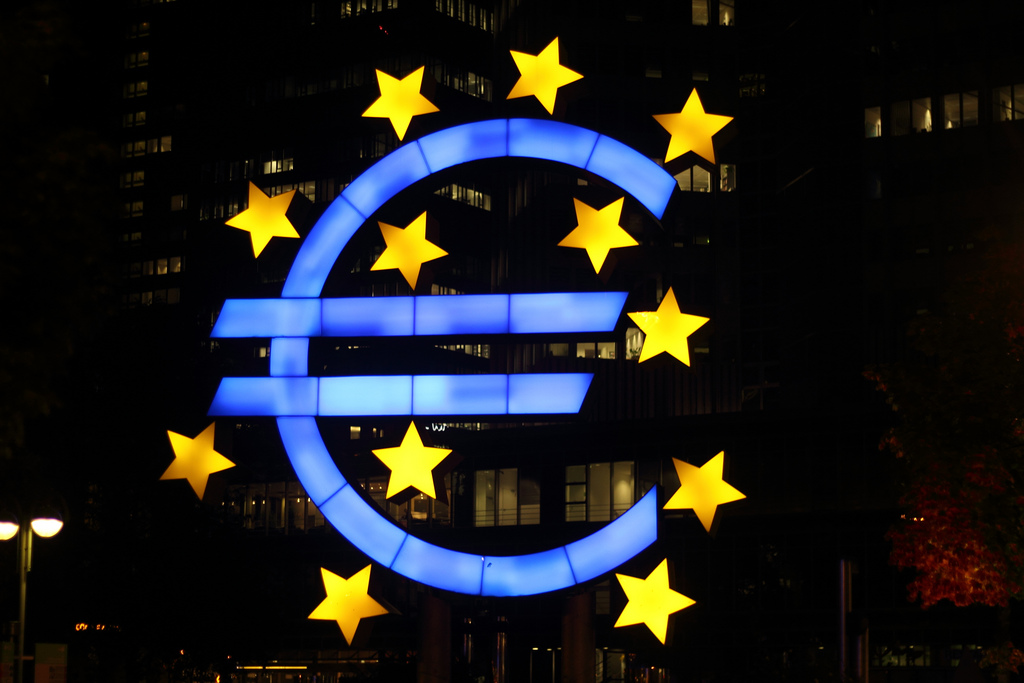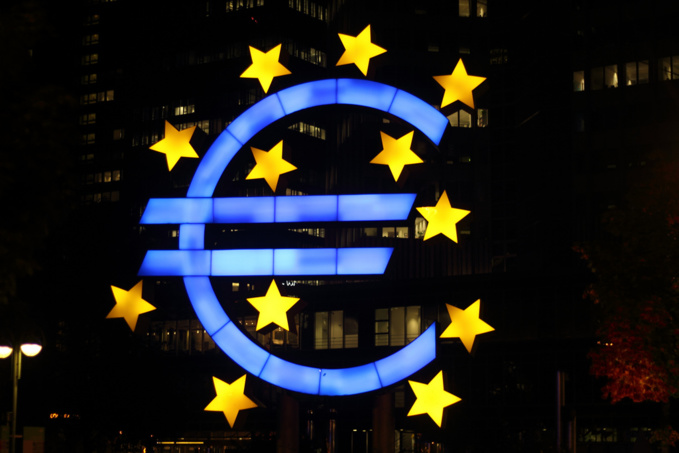It's a difficult time for Europe now. There is a recession in Italy, and the country's populist government demands increased spending. In France, the movement of "yellow vests" is similar to the second, but slow version of Bastille Day. And Germany, which was once a powerful engine of growth in Europe, is suddenly losing ground.
Steen Jakobsen of Saxo Bank believes that this year the situation in Europe can develop in one of two directions. The first path is to a stronger unification, the second is to entropy and dissociation. And the fate of the single European currency will depend on which vector of development Europe chooses.
During the previous crisis cycle, there was hope that creditors could ever pay their debts, while the banks would save face. Then the ECB printed money, and interest rates were zero or even negative. Now there is no such compromise.
Europe can move from dissociation to unification if the European elite finally recognizes the true state of affairs and takes early measures to deal with new challenges. This may result in the EU becoming more cohesive in terms of fiscal policy. It is simply necessary to ensure that the “monetary basis” of the euro is complete and reliable. In this case, the governments of Italy, Spain and Portugal will be able to finance themselves with negative rates that are available for the main economies of the European Union.
However, a reasonable question arises: how can a group of countries that are stumped because of a national populist policy still make a breakthrough, establish joint work and create opportunities to strengthen solidarity and unity?
If the EU takes the path of disintegration, what will its disintegration look like? Will Italy reserve the right to demand a depreciation of its debt, how could it do this when the Italian lira was in use before the monetary union was formed? Or is Germany aware of the scale of the fiscal generosity necessary for financing parity to become the basis of EU stability, and then leave with disgust — perhaps with some other key EU countries? There is no answer to all these questions yet.
The development of a negative agenda in the European Union has been approaching its peak since the sovereign debt crisis in 2010–2012. The yield of government bonds in Italy may look good for some time, if it still rises by about 275 basis points above the corresponding figure in Germany. But on February 7, the EU sharply lowered the forecast for Italian economic growth in 2019 to 0.2% from the previous value of 1.2%. The country's GDP showed two quarters of negative growth in 2018.
The only thing that can improve the situation in Italy is a credit impulse, but so far the EU does not offer anything that could reduce the scale of problems with the balance of Italian banks. In addition, Brussels insists that the Italian budget plan remains within clear limits - this is necessary to ensure stability in the debt markets. And the populist government of Italy in response strongly criticizes the EU for hypocrisy, pointing out that the budget deficit as a percentage of GDP is much larger in France, especially after the protests of the "yellow vests".
However, the salvation of Italy is unlikely to help the whole union. The growth of economies in Europe is rapidly slowing down, which has recently been associated with a sharp drop in activity in German industry and an incredible decline in demand for exported cars. Now it seems as if growth is practically impossible if the European Central Bank does not begin to print money (the slowdown coincides with termination of the purchase of ECB assets during 2018).
If Europe wants to put an end to confusion and demonstrate a desire to unite efforts to regain the former greatness of the EU, it is necessary to use the most powerful weapon - a massive recapitalization of banks and, possibly, a stimulus in the form of a trillion euros. It does not matter who specifically will spread such a message across the EU or implements it in the national policies of countries. It is important that someone did this in principle.
If we see a miracle called “EU 2.0”, then we will witness how the euro is reborn like a phoenix. This may well happen as the European economy, which survived so much under pressure from supporters of austerity and with insufficient recapitalization of banks after the crisis period of 2008-2012, is now more ready than any other world economy for lending and budget spending. There is a glimmer of hope that this particular scenario is being implemented.
If, on the contrary, the euro falls sharply due to the fact that financial institutions that manage global reserves lose faith in its viability, investors will rush to buy an asset designed to become an “intermediate stage” on the way to creating a new currency, be it “partial” Euro (not for all EU countries) or any other currency.
source: forbes.com
Steen Jakobsen of Saxo Bank believes that this year the situation in Europe can develop in one of two directions. The first path is to a stronger unification, the second is to entropy and dissociation. And the fate of the single European currency will depend on which vector of development Europe chooses.
During the previous crisis cycle, there was hope that creditors could ever pay their debts, while the banks would save face. Then the ECB printed money, and interest rates were zero or even negative. Now there is no such compromise.
Europe can move from dissociation to unification if the European elite finally recognizes the true state of affairs and takes early measures to deal with new challenges. This may result in the EU becoming more cohesive in terms of fiscal policy. It is simply necessary to ensure that the “monetary basis” of the euro is complete and reliable. In this case, the governments of Italy, Spain and Portugal will be able to finance themselves with negative rates that are available for the main economies of the European Union.
However, a reasonable question arises: how can a group of countries that are stumped because of a national populist policy still make a breakthrough, establish joint work and create opportunities to strengthen solidarity and unity?
If the EU takes the path of disintegration, what will its disintegration look like? Will Italy reserve the right to demand a depreciation of its debt, how could it do this when the Italian lira was in use before the monetary union was formed? Or is Germany aware of the scale of the fiscal generosity necessary for financing parity to become the basis of EU stability, and then leave with disgust — perhaps with some other key EU countries? There is no answer to all these questions yet.
The development of a negative agenda in the European Union has been approaching its peak since the sovereign debt crisis in 2010–2012. The yield of government bonds in Italy may look good for some time, if it still rises by about 275 basis points above the corresponding figure in Germany. But on February 7, the EU sharply lowered the forecast for Italian economic growth in 2019 to 0.2% from the previous value of 1.2%. The country's GDP showed two quarters of negative growth in 2018.
The only thing that can improve the situation in Italy is a credit impulse, but so far the EU does not offer anything that could reduce the scale of problems with the balance of Italian banks. In addition, Brussels insists that the Italian budget plan remains within clear limits - this is necessary to ensure stability in the debt markets. And the populist government of Italy in response strongly criticizes the EU for hypocrisy, pointing out that the budget deficit as a percentage of GDP is much larger in France, especially after the protests of the "yellow vests".
However, the salvation of Italy is unlikely to help the whole union. The growth of economies in Europe is rapidly slowing down, which has recently been associated with a sharp drop in activity in German industry and an incredible decline in demand for exported cars. Now it seems as if growth is practically impossible if the European Central Bank does not begin to print money (the slowdown coincides with termination of the purchase of ECB assets during 2018).
If Europe wants to put an end to confusion and demonstrate a desire to unite efforts to regain the former greatness of the EU, it is necessary to use the most powerful weapon - a massive recapitalization of banks and, possibly, a stimulus in the form of a trillion euros. It does not matter who specifically will spread such a message across the EU or implements it in the national policies of countries. It is important that someone did this in principle.
If we see a miracle called “EU 2.0”, then we will witness how the euro is reborn like a phoenix. This may well happen as the European economy, which survived so much under pressure from supporters of austerity and with insufficient recapitalization of banks after the crisis period of 2008-2012, is now more ready than any other world economy for lending and budget spending. There is a glimmer of hope that this particular scenario is being implemented.
If, on the contrary, the euro falls sharply due to the fact that financial institutions that manage global reserves lose faith in its viability, investors will rush to buy an asset designed to become an “intermediate stage” on the way to creating a new currency, be it “partial” Euro (not for all EU countries) or any other currency.
source: forbes.com



















